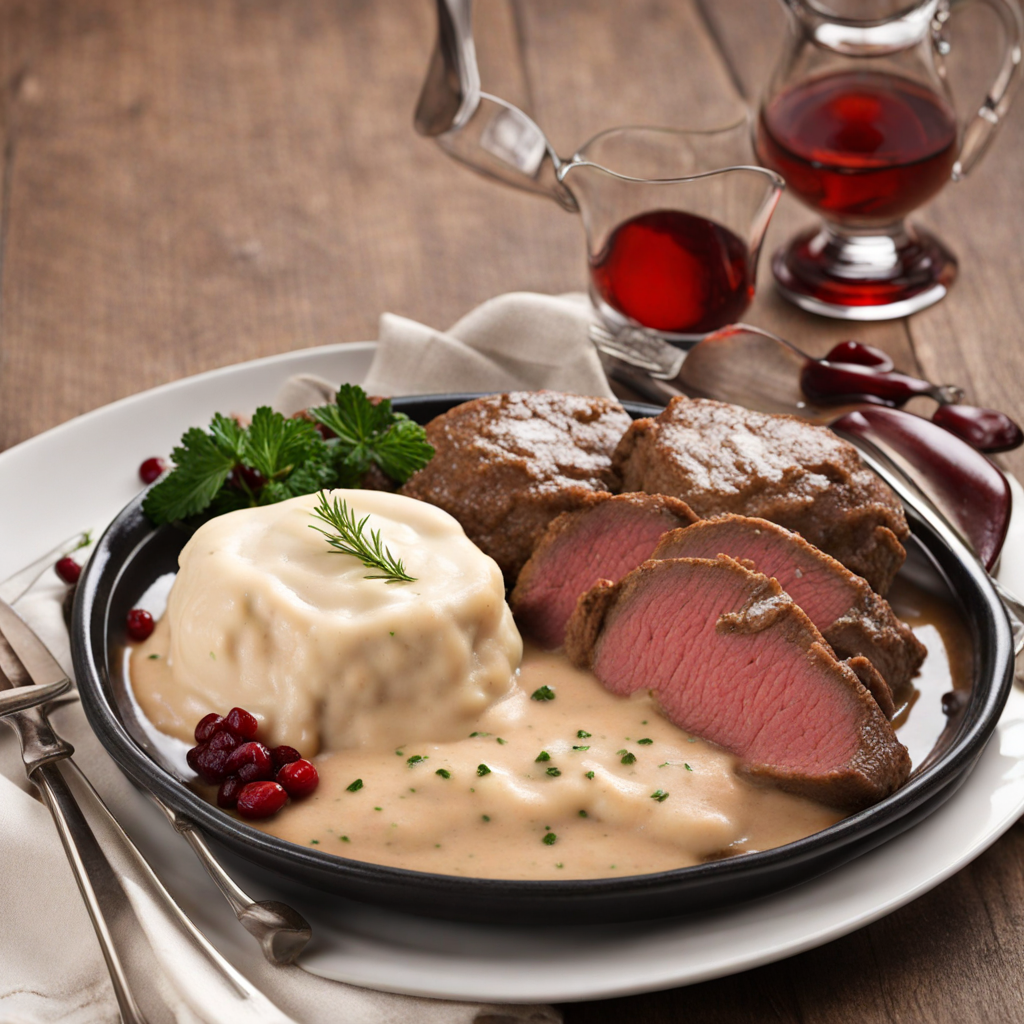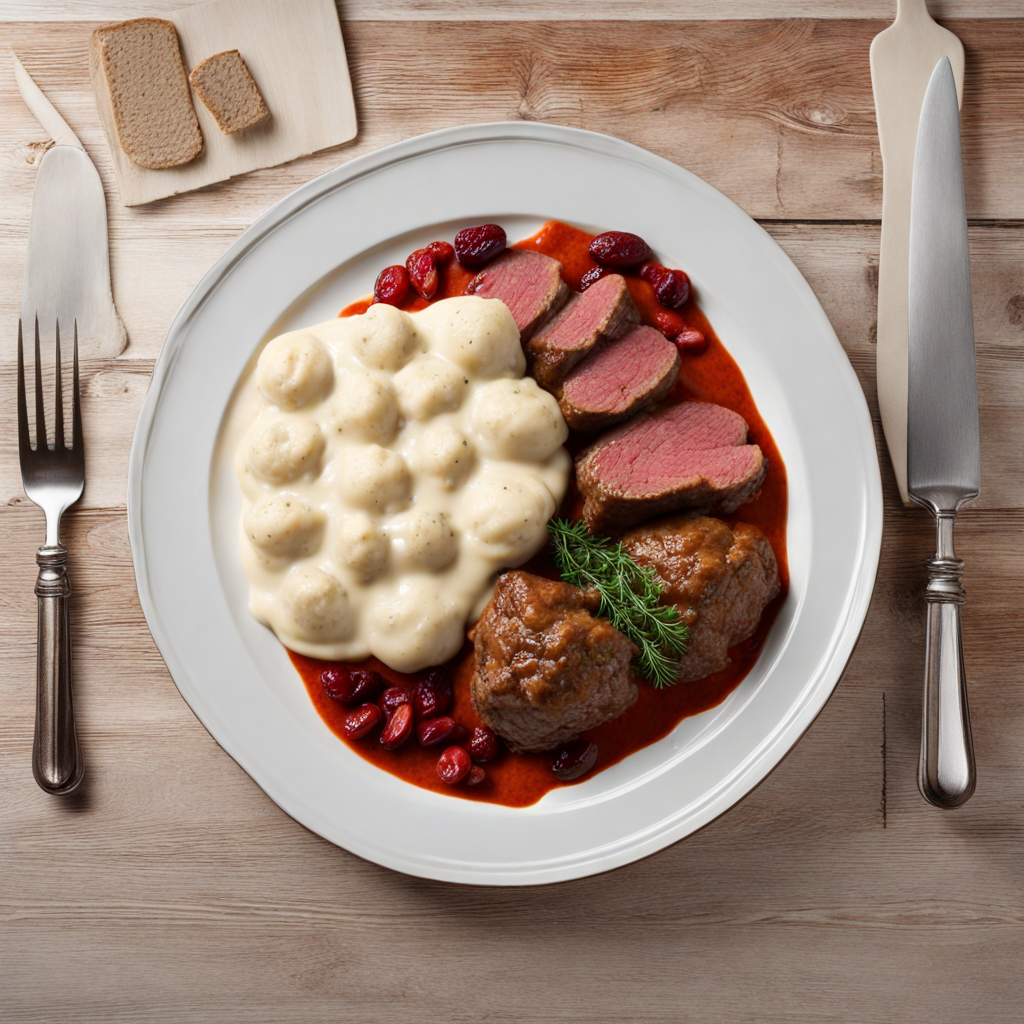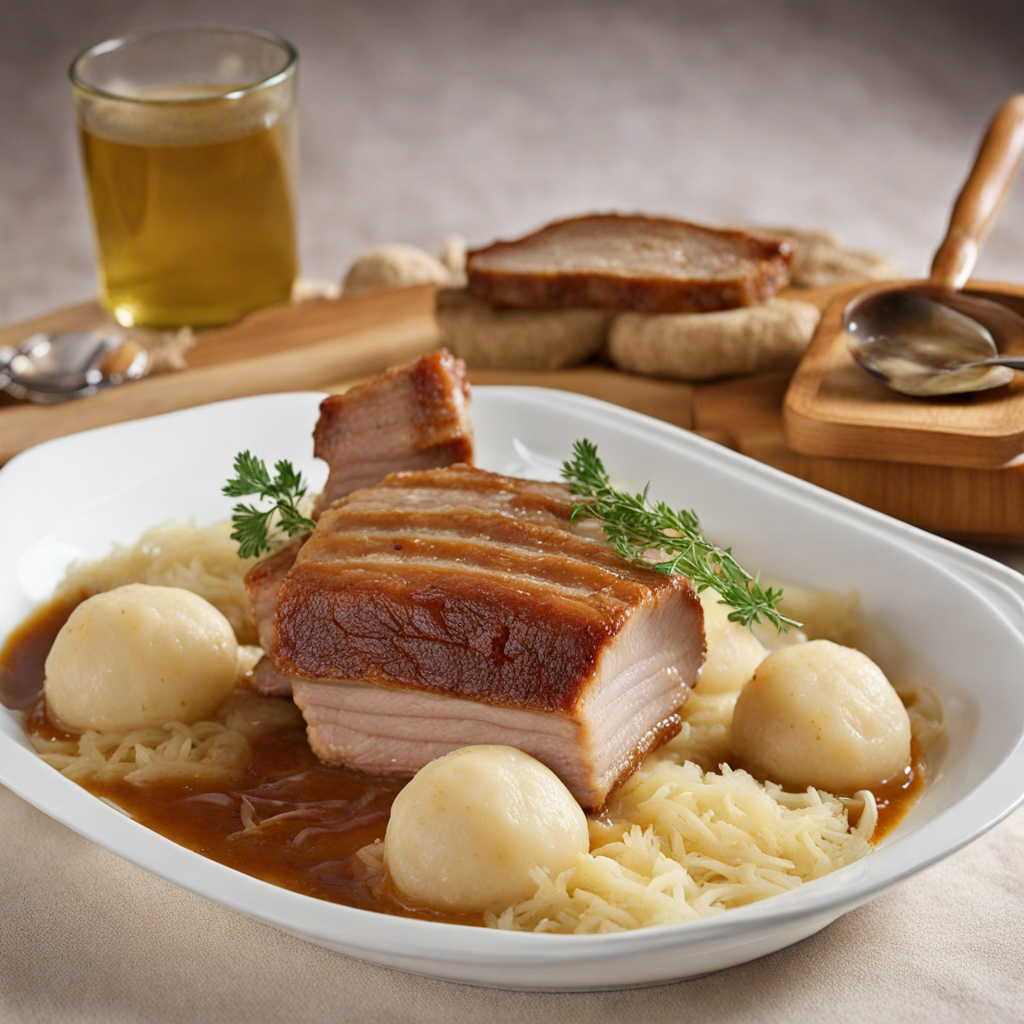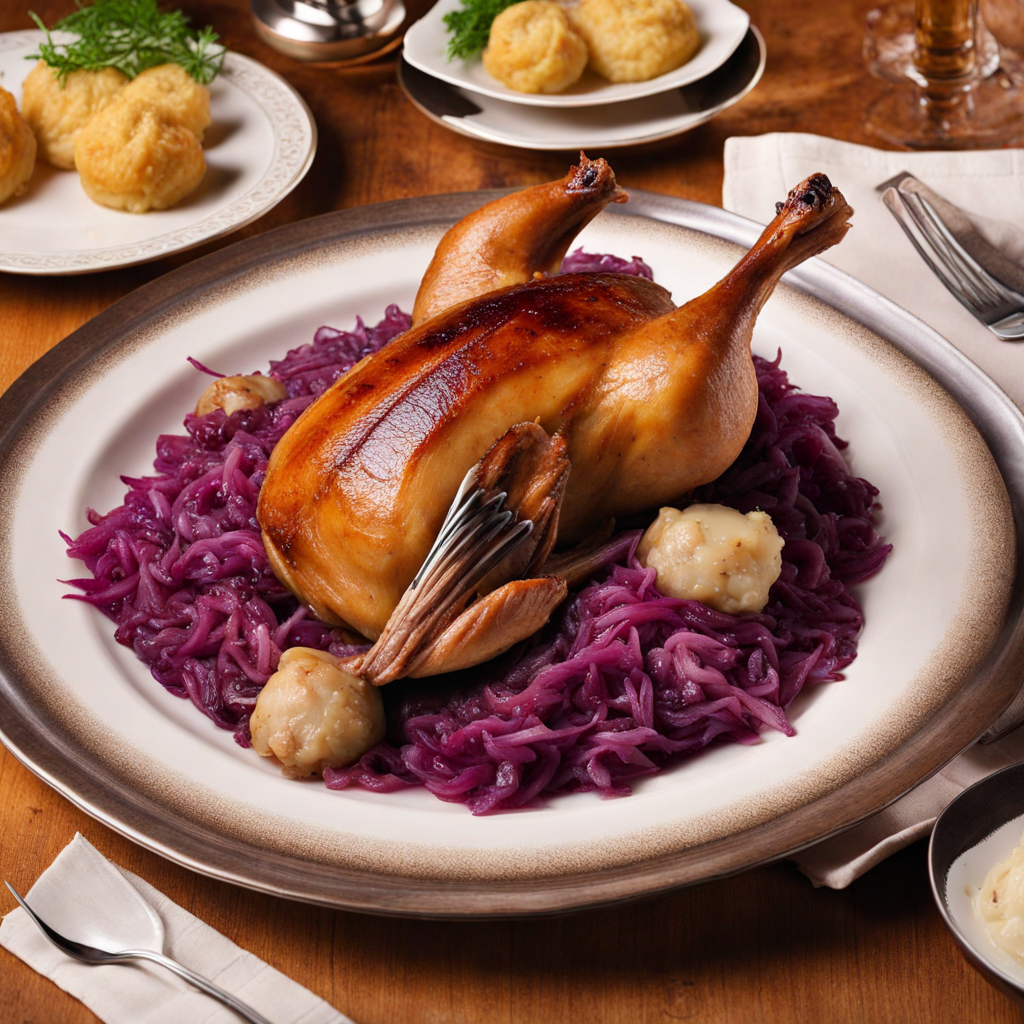Beef Sirloin with Cream Sauce
Beef Sirloin with Cream Sauce, known as "Svíčková," is a beloved Czech dish that embodies the heart of traditional Czech cuisine. This dish features tender cuts of sirloin beef that are expertly marinated and slow-cooked to achieve a melt-in-your-mouth texture. The beef is typically seasoned with a blend of aromatic spices and herbs, allowing the natural flavors to shine through. Once cooked, it is sliced into succulent pieces that are perfect for savoring with each bite. What truly sets Svíčková apart is its rich and velvety cream sauce. This sauce is made from a base of sautéed vegetables, such as carrots, onions, and parsley, which are blended together and then enriched with sour cream. The result is a luxurious sauce that perfectly complements the savory beef, creating a harmonious balance of flavors. The creaminess combined with the slight acidity from the sour cream gives the dish a unique depth, making it both comforting and indulgent. Typically served with a side of traditional Czech dumplings, the dish offers a delightful combination of textures and tastes. The dumplings soak up the luscious cream sauce, creating an unforgettable dining experience. Garnished with a sprinkle of fresh herbs or a slice of lemon for a touch of brightness, Beef Sirloin with Cream Sauce is not just a meal; it’s a celebration of Czech culinary heritage that invites food lovers to explore its deliciously rich flavors.
How It Became This Dish
Svíčková na smetaně: A Culinary Journey through Czech History Svíčková na smetaně, often simply referred to as Svíčková, is a quintessential dish in Czech cuisine that embodies the rich tapestry of the country’s history, culture, and culinary evolution. This creamy, savory dish made from marinated beef, root vegetables, and a luscious sauce is not just a meal but a narrative of the Czech people, their traditions, and their resilience. #### Origins and Historical Context The origins of Svíčková can be traced back to the medieval era, when the Czech lands were part of the Holy Roman Empire. The use of beef as a primary ingredient reflects the agricultural practices of the time, where livestock was an essential part of both farming and sustenance. The dish is believed to have developed in the 18th century, during a period of culinary innovation influenced by the Austro-Hungarian Empire. It was a time when the blending of various culinary traditions led to the emergence of more refined and complex dishes. The term "Svíčková" itself derives from the Czech word "svíčková," which translates to "tenderloin" or "fillet." The dish typically features marinated beef, often from the sirloin or tenderloin cuts, which is slow-cooked to achieve a melt-in-your-mouth texture. The marinade usually consists of a mixture of vinegar, spices, and a variety of root vegetables, including carrots, parsnips, and celery, which enhance the flavor profile of the meat. #### Ingredients and Preparation Central to Svíčková is its rich sauce, made from the vegetables used in the marinade, cream, and sometimes a splash of lemon juice or vinegar. The preparation involves several steps: marinating the meat, browning it, and then simmering it with the vegetables until tender. The sauce is typically pureed to create a smooth consistency and finished with cream, resulting in a luxurious texture that is both comforting and sophisticated. In traditional settings, Svíčková is often served with a side of bread dumplings (knedlíky), which are perfect for soaking up the sumptuous sauce. A garnish of fresh parsley or a slice of lemon adds a touch of brightness to the dish, while a dollop of whipped cream is sometimes included to enhance its indulgent nature. #### Cultural Significance Svíčková na smetaně is more than just a dish; it is a symbol of Czech identity and hospitality. It is commonly served at family gatherings, holidays, and special occasions, such as weddings and Christmas. The dish represents the warmth of the Czech home, where food plays a central role in bringing people together. Its preparation often involves family members gathering in the kitchen, sharing not just ingredients but stories and traditions that have been passed down through generations. In the post-World War II era, as Czechoslovakia underwent significant political and social changes, Svíčková remained a steadfast fixture on dining tables, symbolizing the resilience of Czech culture amidst adversity. The dish became emblematic of Czech hospitality, often served to guests as a demonstration of culinary skill and pride. #### Evolution Over Time As Czech society evolved, so too did Svíčková. During the communist regime, traditional recipes were sometimes altered due to shortages of ingredients or the imposition of state-controlled food production. However, the essence of Svíčková remained intact, and it continued to be a beloved dish among the people. In the 1990s, following the Velvet Revolution and the subsequent opening of Czechoslovakia to the West, there was a revival and re-examination of traditional Czech recipes. Chefs began to experiment with Svíčková, incorporating modern techniques and ingredients while still respecting the authentic flavors that define the dish. This renewed interest led to the creation of variations, such as vegetarian versions, which use mushrooms or tofu in place of beef, catering to evolving dietary preferences. Today, Svíčková is celebrated not just in homes but also in restaurants across the Czech Republic and beyond. It has become a staple in Czech menus, often presented as both a traditional dish and a modern interpretation. Culinary festivals and competitions frequently feature Svíčková, showcasing the skill of chefs who strive to honor the classic preparation while also innovating to meet contemporary tastes. #### Global Recognition As Czech cuisine gained international recognition, Svíčková na smetaně found its way to the palates of food enthusiasts around the world. Czech expatriates and immigrants have played a vital role in promoting this dish outside of the Czech Republic, introducing it to diverse cultures and culinary scenes. In recent years, food blogs, cookbooks, and social media have further popularized Svíčková, showcasing its preparation and inviting people to experience the flavors of Czech heritage. The dish has also become a point of cultural pride for Czechs living abroad, serving as a connection to their homeland. It embodies the shared memories of family meals and festive gatherings, evoking nostalgia and a sense of belonging. #### Conclusion Svíčková na smetaně is not merely a dish; it is a narrative of the Czech people, their history, and their enduring spirit. From its humble beginnings in medieval kitchens to its status as a national treasure, Svíčková has evolved while maintaining its roots in tradition and culture. It stands as a testament to the resilience and adaptability of Czech cuisine, capturing the essence of hospitality and the joy of sharing food with loved ones. As the world continues to embrace diverse culinary traditions, Svíčková na smetaně serves as a delicious reminder of the power of food to connect us across cultures and generations. Whether enjoyed in a cozy Czech restaurant or prepared at home, this beloved dish will always hold a special place in the hearts—and stomachs—of those who savor its rich flavors.
You may like
Discover local flavors from Czech Republic







